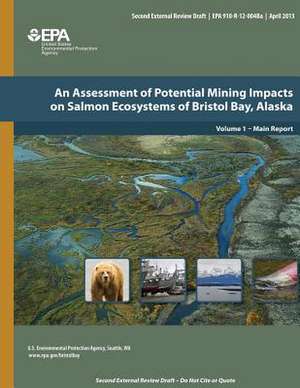An Assessment of Potential Mining Impacts on Salmon Ecosystems of Bristol Bay, Alaska Volume 1 - Main Report
Autor U. S. Environmental Protection Agencyen Limba Engleză Paperback
Preț: 242.97 lei
Nou
Puncte Express: 364
Preț estimativ în valută:
46.51€ • 50.53$ • 39.09£
46.51€ • 50.53$ • 39.09£
Carte disponibilă
Livrare economică 31 martie-14 aprilie
Preluare comenzi: 021 569.72.76
Specificații
ISBN-13: 9781500697174
ISBN-10: 1500697176
Pagini: 628
Dimensiuni: 216 x 279 x 32 mm
Greutate: 1.43 kg
Editura: CREATESPACE
ISBN-10: 1500697176
Pagini: 628
Dimensiuni: 216 x 279 x 32 mm
Greutate: 1.43 kg
Editura: CREATESPACE
